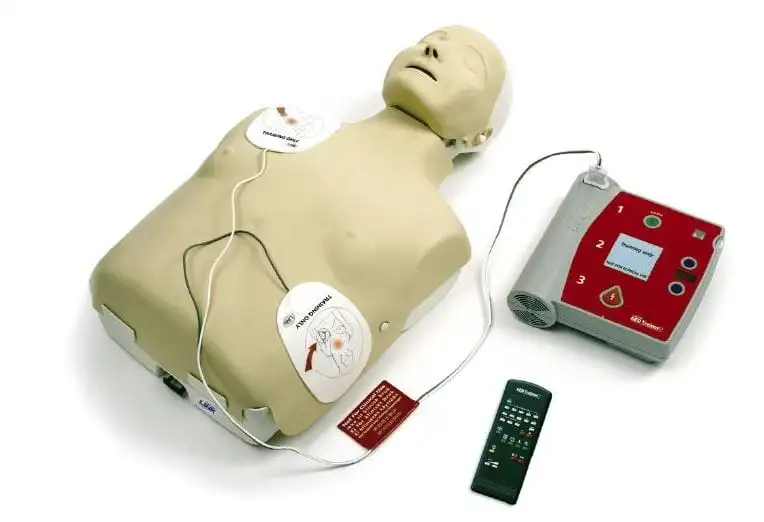
An AED, or Automated External Defibrillator, is a portable, life-saving device used to help people experiencing sudden cardiac arrest. It's sophisticated, yet easy-to-use even for even non-medical personnel. The device is a type of computerized defibrillator that can automatically analyze the heart's rhythm, and if necessary, deliver an electrical shock, or defibrillation, to help the heart reestablish an effective or normal rhythm.
The device has simple audio and visual commands. AEDs are designed to be simple to use for the layperson, and the use of AEDs is taught in many first aid, certified first responder, and basic life support (BLS) level cardiopulmonary resuscitation (CPR) classes.
The combination of CPR and early defibrillation is effective in saving lives when used in the first few minutes following a collapse from sudden cardiac arrest.
AEDs can be used by all first responders including the general public and those providing professional emergency services.
The portable version of the defibrillator was invented in the mid-1960s by Frank Pantridge in Belfast, Northern Ireland and the first automatic, public-use defibrillator was produced by the Cardiac Resuscitation Company in the late 1970s. The unit was launched under the name Heart-Aid.
Types
The AED system includes accessories, such as a battery and pad electrodes, that are necessary for the AED to detect and interpret a person's heart rhythm and deliver an electrical shock if one is needed.
There are two main types of AEDs: public access and professional use.
Public access AEDs can be found in airports, community centers, schools, government buildings, hospitals, and other public locations. They are intended to be used by laypeople who have received minimal training.
Professional use AEDs are used by first responders, such as emergency medical technicians (EMTs) and paramedics, who receive additional AED training.
AEDs can be semi-automated or fully automated.
Semi-automated defibrillators analyze the heart's rhythm, and if an abnormal heart rhythm is detected that requires a shock, then the device prompts the user to press a button to deliver a defibrillation shock.
Fully automated defibrillators analyze the heart's rhythm and deliver a defibrillation shock if commanded by the device software without user intervention.
Uses
An automated external defibrillator (AED) is used in cases of life-threatening cardiac arrhythmias that can lead to sudden cardiac arrest, distinct from a heart attack. The abnormal heart rhythms the device can treat are usually limited to:
- Pulseless Ventricular Tachycardia (VT or V-Tach)
- Ventricular Fibrillation (VF or V-Fib)
These arrhythmias indicate that the heart is electrically active but in a dysfunctional manner, hindering its ability to effectively pump and circulate blood. Ventricular tachycardia involves the heart beating too rapidly to properly pump blood, eventually progressing to ventricular fibrillation. In ventricular fibrillation, the heart's electrical activity becomes chaotic, preventing efficient blood pumping. Over time, fibrillation decreases, leading to asystole, commonly known as a "flat line."
AEDs, along with other defibrillators, aren't meant to shock asystole patterns because it doesn't yield positive clinical outcomes. To give an asystolic patient a chance at survival, a combination of CPR and cardiac stimulant drugs is required to establish one of the shockable rhythms. This emphasizes the critical importance of initiating CPR before the arrival of a defibrillator.
